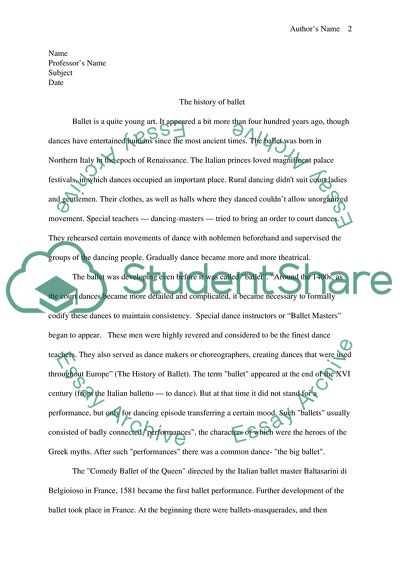Cite this document
(The History of Ballet Research Paper Example | Topics and Well Written Essays - 1750 words, n.d.)
The History of Ballet Research Paper Example | Topics and Well Written Essays - 1750 words. Retrieved from https://studentshare.org/culture/1842520-ballet-research-paper
The History of Ballet Research Paper Example | Topics and Well Written Essays - 1750 words. Retrieved from https://studentshare.org/culture/1842520-ballet-research-paper
(The History of Ballet Research Paper Example | Topics and Well Written Essays - 1750 Words)
The History of Ballet Research Paper Example | Topics and Well Written Essays - 1750 Words. https://studentshare.org/culture/1842520-ballet-research-paper.
The History of Ballet Research Paper Example | Topics and Well Written Essays - 1750 Words. https://studentshare.org/culture/1842520-ballet-research-paper.
“The History of Ballet Research Paper Example | Topics and Well Written Essays - 1750 Words”, n.d. https://studentshare.org/culture/1842520-ballet-research-paper.


